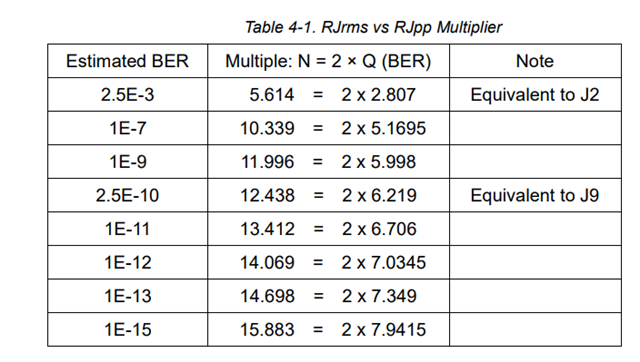Hi team
First of all, please let me make sure my understanding as below.
According to the link as below, we can see "The TLK2711 as specified will achieve a BER of 1E-12 or better. This means there could be a single bit error in 10^12 bits." Does this mean that the jitter can be 0.4UI when BER is 1E-12?
If my understanding is correct, could you estimate the value of UI when the bit error rate is 10^-10 and 10^-8?
Regards,
Noriyuki Takahashi





